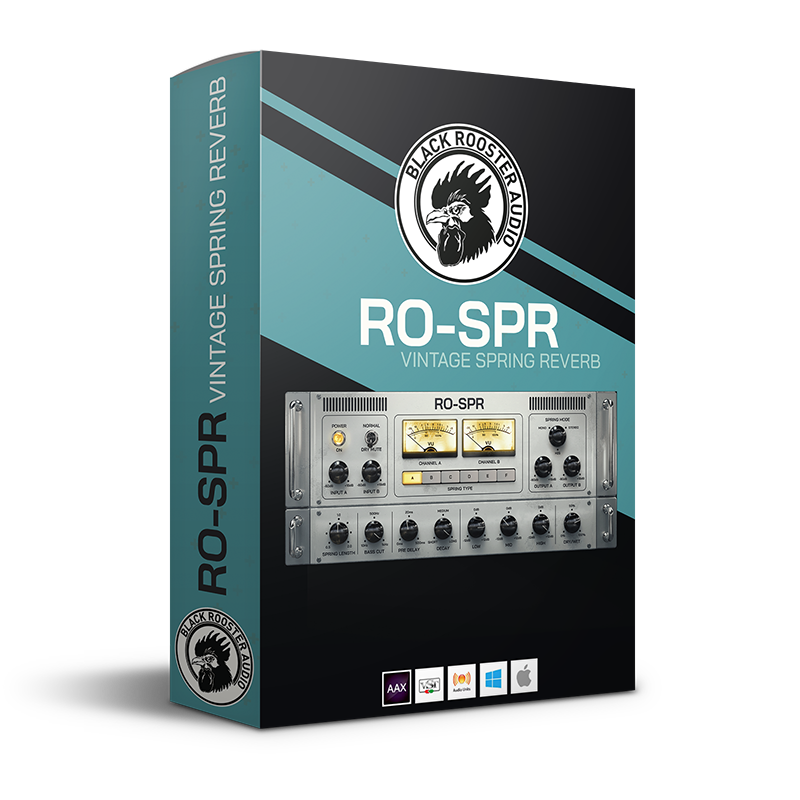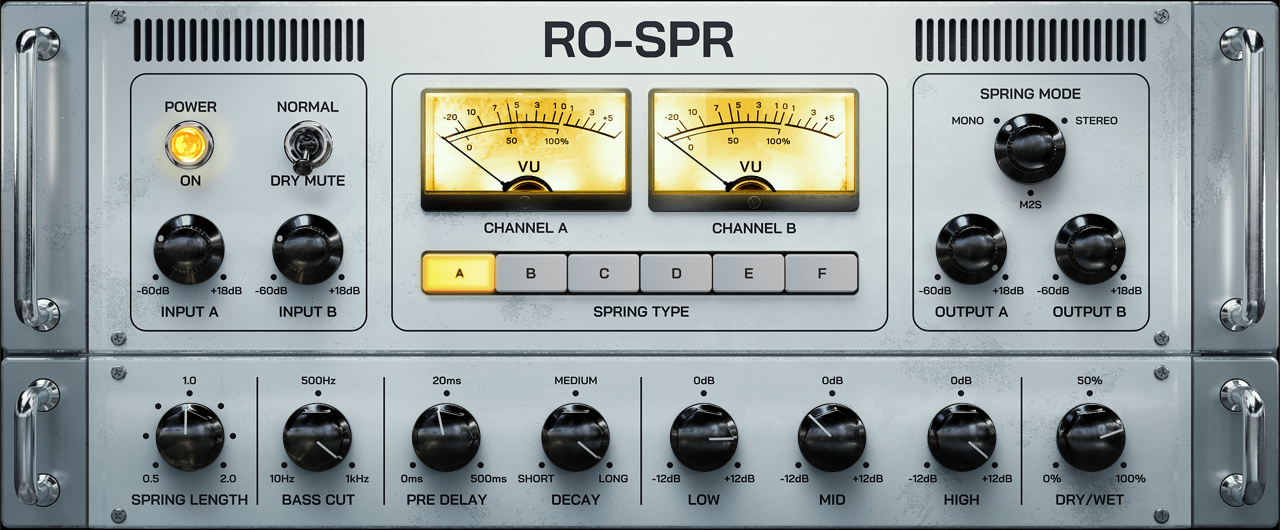Overview
The RO-SPR is an authentically modeled vintage spring reverb that adds character and just the right amount of psychedelic flair to your productions. Experience the iconic sound of Hendrix & co. with its 6 spring types, a three-band EQ, as well as spring length and mode control.
A Sonic Revolution
It was the year 1939, when Laurens Hammond applied for the first patent of an innovative, synthetic reverberation unit, that was about to revolutionize the sound of recorded music. With a simple transducer at one end of a metal spring, and a pickup at the other.
Mr. Hammond further implemented his idea of a mechanical, spring-based hall processor, that found its way into the legendary Hammond organs (from 1960), as well as into standalone hardware units like the Accusonics Type 4 SR. Leo Fender made the concept famous, with his introduction of the 1963 Fender Vibroverb.
The Spring Reverb is one of the most used hardware reverbs in studio history, but unlike bulky plate reverbs that could easily cost thousands of dollars, and weighed around 600 pounds each, most spring reverbs are more space- and cost-efficient.
Soundwise, spring reverbs are often described as being ‘bouncy’ or ‘ringy’, due to their mechanical layout, which tends to be low-end heavy. The spectrum used to be corrected by an EQ to maintain a natural room feel - yet many mix engineers used that exact low-end boost to add to their guitar, vocal, or synth tone. This sound design trick, combined with the renowned characteristics of a spring can be heard across many hit records - from The Doors to Queens Of The Stone Age.
The RO-SPR will throw you back in time with its very unique collection of classic spring types, while adding modern-day features to tailor each section precisely to your needs.
Add that vintage spring sound to your guitar, bass, vocal, drum, brass or synth tracks, or try it on any bus or mix channel. The result is a familiar, yet mysteriously mechanical roomy reverb that you’ll love!
Sound Samples
Features
6 Spring Types
The RO-SPR comes with 6 very unique spring types that have been faithfully modeled after their hardware counterparts, covering 4 decades of sound experiments, innovation, and heavy studio usage.
Adjustable Length & Decay
Fine-tune your spring reverb experience by adjusting the length and decay, taking you all the way from classic room reverberation to psychedelic space design.
Mono, Stereo, M2S Mode
We have implemented a versatile signal routing system that allows for mono and stereo processing as well as an M2S mode, which creates width from mono/stereo sources. In stereo mode, the left/right signal is sent to independent springs, whereas in M2S mode, the mono signal is sent to non-identical springs to create bespoke width.
Classic 3-Band Equalizer
In order to further tame the very specific spectral behavior of the spring, we have added a 3-band EQ to this plug-in. As springs tend to be naturally low-end heavy, with less mids or high-end, this can be equalized in the EQ section.
Adjustable Gain-Staging
The adjustable gain-staging gives you the ability to control the pre-processing input gain level, as well as the post-processing output gain level. Moreover, we have separated the stereo channels, to fine-tune the amplitude for the natural stereo image of multiple springs. These can vary based on the spring material and the signal’s frequency spectrum.





